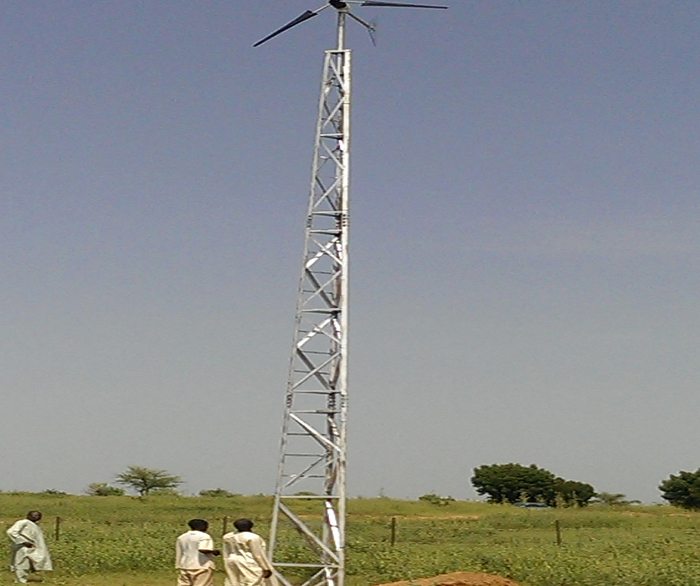Extensive research conducted by the U.S.D.A.-Agricultural Research Service Conservation and Production Research Lab., at Bushland Texas, coupled with empirical evidence gathered by our company in the course of executing the works of the Great Green Wall Project of the Ministry of Environment, in MaiAdua, Mashi, and Jibiya LGA’s of Katsina State and Sokoto State, as specialist sub-contractors , has shown that a Solar P.V.-Wind Turbine Hybrid system has distinct and significant advantages over both stand-alone Solar P.V. and mechanical wind mills in terms of system efficiency, total output, value for money and reliability.
Specifically, Clark et al (1992) found that a 1.5 KW Wind Turbine system pumps twice as much water as a 2.44 M mechanical windmill at the same price while Vick et al (2007) subsequently found that as pumping depths increased, the windmill systems became even more expensive than the wind turbine systems and high wind speeds lead to increased wear in mechanical windmills, with attendant maintenance of course.
Furthermore, Vick et al (2012) determined that with a Hybrid 900Watt Wind Turbine-Solar P.V., daily water pumped increased by 28% more than if the Wind Turbine or Solar P/V were operating alone. In addition, system efficiency was higher for the Hybrid Wind Turbine. These studies were conducted at the U.S.D.A-Agric. Research Lab. Bushland, Texas and it is pertinent to note that Bushland Texas has near identical Wind speed patterns with Sokoto, Nigeria.
Empirically, we observed that our sites in Katsina state that have the Hybrid Wind Turbine-Solar P.V. Produced over 60% more water than the Solar P.V. sites. This is due to the fact that the Solar P.V. systems start pumping water at about 8 am and continue through to around 4-5 pm depending upon solar azimuth (Seasonal), while the wind-turbine in the Wind Turbine-Solar P.V. Hybrid picks up after solar hours and continues driving the pump all night and into the morning. Incidentally, nocturnal wind speeds are apparently higher than diurnal wind speeds.
For example, our Hybrid site Kokutuko in MaiAdua L.G.A. of Katsina State in Nigeria (Luminous Renewable Energy Whisper 200-120v Wind Turbine + 440Watts-105vdc Hybrid on Grundfos SQF 2.5-2 Submersible Pump) has a Human Population of 11000 and Livestock population (mostly Cattle) population of 500, while solar Site Dan nasara in same locality ( 595 watts 123vdc on Grundfos SQF 2.5-2) has a human population of about 5000 and cattle population of 300.
Despite the higher population of Kokutuko and consequently the higher water demand, the 22,500 litre overhead tank is never exhausted, while the same tank size in Dan Nasara runs out of water by 5 pm and is not in operation again till 8-9 am the following day. Borehole yield for the two sites are nearly identical.
This scenario is repeated in Makerawa (440Wats-105vdc) and SabuwarRijiya (Luminous Renewable Energy Whisper 200-120v Wind Turbine + 440Watts-105vdc Hybrid on Grundfos SQF 2.5-2 Submersible Pump), with the former having a Human Population of 3,000 & Livestock population of 400 running out of water by 4 pm and the latter having a larger Human & Livestock population of 12000 and 800 respectively, having water 24 hrs.
These scenarios are in complete agreement with system sizing predictions employing Grundfos WEBCAPS tools, predicated upon Wind regime studies of several Nigerian regions, indicating substantial increases in water volume pumped from boreholes with Wind-Solar hybrid power source, over Wind or Solar stand-alone systems.
Funding Obtained by SUSI Partner for Expansion of Hybrid Solar Photovoltaic Projects
Lolwe Hybrid Solar Mini-Grid Power Plant Inaugurated in Uganda

